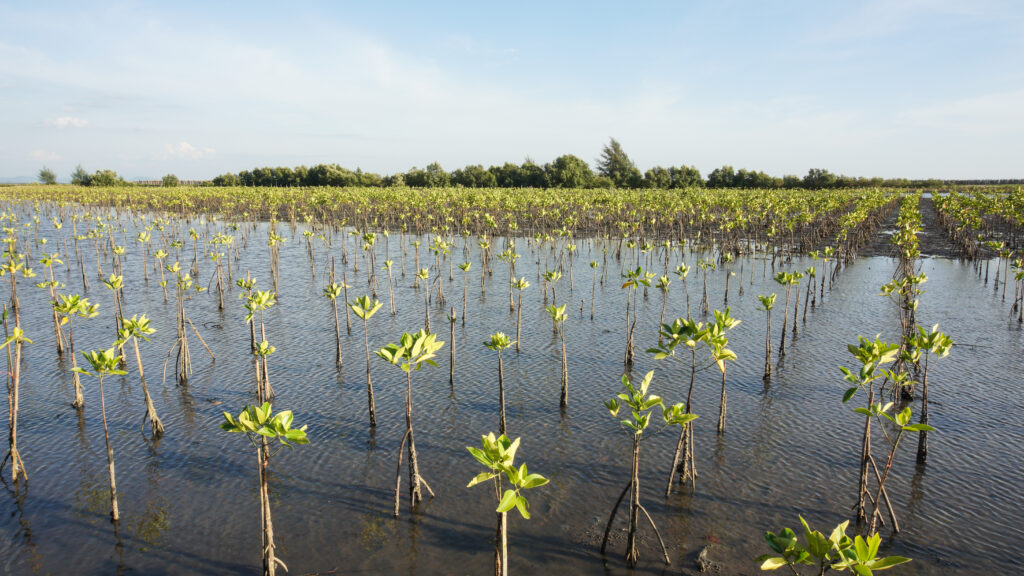ENVIRONMENT
Mitigation or adaptation? Understanding climate strategies
24 OCTOBER 2025
Climate change is no longer a future threat; it is a present reality that is impacting multiple regions of the planet simultaneously. The intensification of extreme weather events such as heatwaves, torrential rain and prolonged droughts has direct consequences for public health, ecosystems and the global economy.
In climate debates, the concepts of mitigation and adaptation are often taken for granted. However, these terms are not always used correctly in public conversations or decision-making processes. Therefore, in addition to recognising the urgency of the problem, it is crucial to grasp its various dimensions and the technical tools that enable comprehensive and effective solutions.

Of the 45 indicators assessed in the State of Climate Action 2025 report, none are aligned with the trajectory needed to limit warming to 1.5°C
What is the current situation regarding climate change?

The latest available data confirms that key climate change indicators are still not on track to limit global warming to 1.5°C.
- May 2025 was the second warmest since 1850, with a temperature anomaly of +1.10°C above the 20th-century average.
Source: NOAA – Global Climate in May 2025
- Of the 45 indicators assessed in the State of Climate Action 2025 report, none are aligned with the trajectory needed to limit warming to 1.5°C.
Source: WRI – State of Climate Action 2025
- Critical sectors such as coal-fired power generation and deforestation need to increase the pace of transformation tenfold and ninefold, respectively.
Source: WRI – Key Findings
- Although progress has been made – such as the exponential growth of solar energy and the increase in private climate finance – it is insufficient to achieve the goals of the Paris Agreement.
Source: WRI – Climate Action 2025 Release
How can we tackle climate change?
Climate action encompasses all strategies, policies and measures aimed at tackling climate change. Within this framework, there are two main areas of focus: mitigation and adaptation.
Mitigation
Mitigation refers to all actions aimed at reducing or preventing greenhouse gas emissions. The aim is to slow down global warming by addressing its causes.

- Renewable energies (solar, wind, geothermal)
- Energy efficiency in buildings, industry, and transportation
- Decarbonization of industrial processes
- Low-emission materials and technologies
- Circular economy and sustainable waste management
- Electric mobility and sustainable public transportation
- Captura y almacenamiento de carbono (CCS) y sumideros naturales.
Adaptation
This includes actions to adapt to the unavoidable effects of climate change, making human and natural systems less vulnerable.

- Climate risk assessments and adaptive land-use planning
- Resilient design and construction for extreme scenarios
- Green and blue infrastructure
- Integrated water resource management
- Early warning systems
- Nature-based solutions (NbS) and ecosystem-based solutions (EbS)
- Coastal adaptation to sea level rise
What is the best way to tackle the problem?
Comprehensive solutions combine mitigation and adaptation objectives to maximise climate, social and environmental benefits. While not always implementable, these solutions enable a holistic approach to climate change, optimising resources and generating co-benefits.
The most notable include:
- Sustainable construction: designing buildings with low environmental impact and high energy efficiency, adapted to future climate conditions.
- Green and blue infrastructure: integrating natural elements (vegetation, bodies of water) into urban environments to regulate temperature, manage runoff, and capture carbon.
- Ecosystem conservation and management: protection of forests, wetlands, and other key ecosystems as carbon sinks and natural barriers against extreme events.
- Changes in production and consumption patterns: promoting sustainable, circular, and low-carbon models.
- Climate awareness and education: strengthening social capacities for informed and participatory climate action.
- Bioclimatic architecture: passive design that takes advantage of natural conditions to reduce energy demand.

In addition to its direct impact on reducing emissions and strengthening resilience, climate action generates a series of environmental, social and economic co-benefits that reinforce its strategic value. These include improved public health due to reduced air pollution, biodiversity conservation through protecting key ecosystems, job creation in sustainable sectors, and reducing social inequalities by ensuring equitable access to climate-resilient resources and services. These additional benefits mean that climate action is a cross-cutting tool for sustainable development.
Ultimately, the fight against climate change requires a two-pronged approach: mitigation to reduce greenhouse gas emissions and adaptation to prepare our societies for the now inevitable impacts. It is essential to integrate both dimensions into planning and decision-making in order to build resilience and move towards sustainable development.



